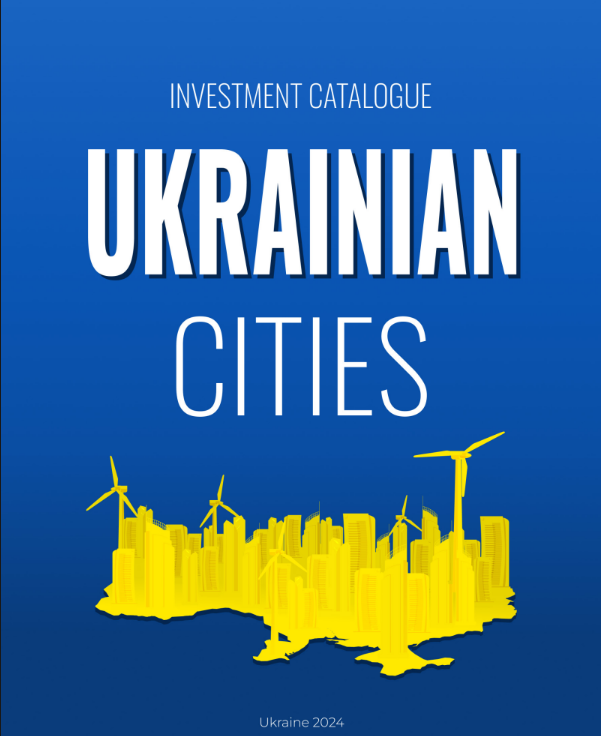Investment catalogue of Ukrainian cities
Ukraine’s energy infrastructure is facing significant difficulties, especially in its heating and water supply systems, which have been severely impacted by the ongoing conflict. Before the invasion, there were more than 83,000 buildings with central heating in Ukraine, but only 40% of residential buildings were connected to hot water supply. Currently, only 18 cities have operational hot water systems, experiencing an overall deterioration of around 80%. The situation is even worse in the public sector, where only 40% of public buildings are connected to district heating.
The water supply and sewage systems are in critical condition, necessitating considerable investments estimated between USD 20 million and USD 100 million for each regional city with a population of up to 400,000. Many water utilities continue to use outdated technologies, resulting in high energy consumption and water losses. Modern demand-side management technologies and alternative energy sources could significantly improve these utilities’ efficiency.
The total cost of reconstruction and recovery in Ukraine is estimated at $486 billion over the next decade. In 2024 alone, Ukraine will need around $15 billion for immediate reconstruction priorities, with a funding gap of $9.5 billion.
The ongoing war has led to continual increase in the number of destroyed and damaged facilities. However, this situation presents a unique opportunity to improve Ukrainian cities. The restoration of urban areas—cities, towns, and villages—requires a fresh perspective on planning, incorporating innovative approaches to urban space organization, and addressing the genuine needs of local residents.
The purpose of developing this investment catalogue is the identification of potential energy efficiency projects in urban infrastructure. This catalogue showcases the curated investment opportunities across our vibrant cities, each project representing a step towards a more sustainable, resilient, and technologically advanced Ukraine.
This catalogue offers a concise overview of the cities’ histories and their development during the war, highlighting the projects that municipalities deem most suitable for their recovery and progress toward energy efficiency.
Its distinctive feature is the emphasis on investment projects within the municipal sector—such as heating, water supply, and lighting—which are frequently overlooked.
